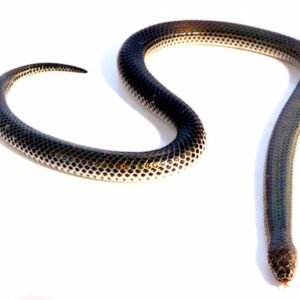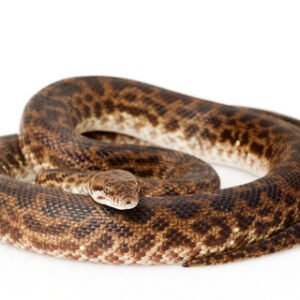The Fascinating World of the Sonoran Gopher Snake
Introduction to the Sonoran Gopher Snake
sonoran gopher snake, scientifically known as Pituophis catenifer affinis, belongs to the family Colubridae. This non-venomous constrictor is primarily found in the arid regions of the southwestern United States, particularly within the Sonoran Desert, and parts of northern Mexico. Its ecological niche is crucial, as it serves as both a predator and prey within its habitat, helping to maintain a balanced ecosystem.
One of the distinguishing characteristics of the Sonoran gopher snake is its impressive size, often reaching lengths of 4 to 7 feet. Its coloration is typically a combination of yellow, tan, and brown, complemented by dark brown or black blotches that provide effective camouflage against the desert environment. The scales of this species are smooth and give them a glossy appearance, which can be visually striking. This adaptability in coloration aids in survival, allowing them to blend seamlessly with sandy and rocky terrains.
The Sonoran gopher snake is a skilled predator, primarily feeding on small mammals, birds, and occasionally, reptiles. Their hunting strategy often involves ambushing or stalking their prey, using keen eyesight and sensitivity to vibrations to detect movement. This species is also known for its defensive behavior, where it may mimic the rattling sound of a rattlesnake when threatened, despite having no venom. This remarkable mimicry can deter potential predators and offers insight into their survival strategies.
In summary, the Sonoran gopher snake stands out as a fascinating subject of study due to its unique adaptations, ecological importance, and intriguing behaviors. Understanding this species enhances our appreciation for the intricate interplay of life within its desert habitat.
Habitat and Distribution
sonoran gopher snake, a non-venomous colubrid, predominantly inhabits the southwestern United States and Mexico, particularly thriving in the expansive areas of Arizona, California, Nevada, and Sonora. This species showcases a remarkable versatility in its habitat preferences, adeptly adapting to various environments, including arid deserts, grasslands, and open woodlands. The Sonoran Desert, characterized by its iconic Saguaro cacti and diverse flora, provides an ideal setting for these snakes, offering ample shelter and abundant prey.
Sonoran gopher snakes typically favor habitats with loose soil or sandy terrain, which aids in their burrowing lifestyle. They can commonly be found near rocky outcrops and shrubs that offer cover from predators and harsh weather conditions. Additionally, their distribution extends to areas influenced by human activities, such as agricultural lands and suburban regions. However, these human-modified environments can present challenges, including habitat fragmentation and increased mortality from vehicle collisions.
Environmental factors, such as temperature and moisture levels, significantly influence the distribution of the Sonoran gopher snake. These snakes are most active during warmer months, where they emerge from their burrows to bask in the sun and hunt for prey. Their prey primarily consists of small mammals, birds, and reptiles, which are plentiful in their preferred habitats. Seasonal changes can also impact their distribution, as they may migrate to cooler areas during peak summer heat or seek shelter from freezing temperatures in winter.
Ultimately, understanding the habitat and distribution of the Sonoran gopher snake is crucial for conservation efforts. Protecting their natural environment is essential as urbanization and climate change continue to exert pressure on their populations. Efforts to maintain healthy ecosystems are vital for ensuring the persistence of this charismatic species. By addressing human impacts and fostering awareness, we can contribute to the preservation of the fascinating world of the Sonoran gopher snake.
Behavior and Adaptations
The Sonoran gopher snake (Pituophis catenifer affinis) exhibits a range of fascinating behaviors and adaptations that enable its survival in the diverse ecosystems of the Sonoran Desert. Renowned for their exceptional hunting and foraging strategies, these snakes primarily feed on small mammals, birds, and lizards. They utilize their keen sense of smell, aided by their forked tongues, to detect prey within their environment. Once the scent is detected, they employ a combination of stealth and speed to ambush their target. This hunting technique highlights the adaptability of the Sonoran gopher snake to its habitat, allowing it to thrive in competitive ecosystems.
In terms of mating rituals, the Sonoran gopher snake engages in a distinct courtship process. During the breeding season, which occurs in the spring, males display aggressive behaviors, including tail vibration and body posturing, to attract females. Following successful mating, females will lay a clutch of eggs, demonstrating reproductive strategies essential for the continuation of the species. The temperature and humidity of the nesting site play a crucial role in egg development and hatching success, further emphasizing the snake’s dependence on environmental factors for reproduction.
To navigate their harsh environment, Sonoran gopher snakes utilize remarkable physical adaptations. Their coloration typically resembles the sandy soils and rocky textures of the desert, providing effective camouflage against potential predators. This cryptic appearance aids in both their hunting strategies and their defense mechanisms, allowing them to remain undetected. Additionally, these snakes are proficient diggers, often creating burrows that not only serve as shelters from extreme temperatures but also as hiding spots from predators. Such burrowing habits further reflect their adaptability, where physical traits enhance survival capabilities in a challenging landscape.
Conservation Status and Efforts
sonoran gopher snake, scientifically known as Pituophis catenifer affinis, holds a significant place within the ecosystems of the Sonoran Desert. However, its conservation status has raised concerns due to several threats. Habitat loss remains a prominent issue, primarily caused by urban development, agricultural expansion, and infrastructure projects that fragment their living spaces. As human populations grow, the destruction of natural habitats reduces the availability of essential resources for these snakes.
Climate change further exacerbates these challenges. Altered weather patterns, increased temperatures, and changes in precipitation affect the ecological balance of the Sonoran Desert, impacting the gopher snake’s food sources and breeding activities. Additionally, increased human activity often results in direct disturbances, such as road mortalities and illegal collecting, which can severely impact local populations.sonoran gopher snake
Fortunately, various conservation efforts are under way to safeguard the Sonoran gopher snake. These initiatives aim to protect and restore its natural habitat through land use planning, creating wildlife corridors, and implementing policies that minimize human-wildlife conflict. Organizations dedicated to herpetology and conservation are working collaboratively with local communities to educate them on the importance of preserving this species. Raising public awareness has proven essential in promoting protective measures.
Individuals can contribute to the preservation of the Sonoran gopher snake by participating in local conservation programs, advocating for responsible land use, and supporting wildlife protection regulations. Simple actions, such as spreading awareness about the importance of this species and promoting sustainable practices, can have a lasting impact. While the road to ensuring the Sonoran gopher snake’s survival may be challenging, concerted efforts at both community and organizational levels can lead to promising outcomes for this fascinating species.





